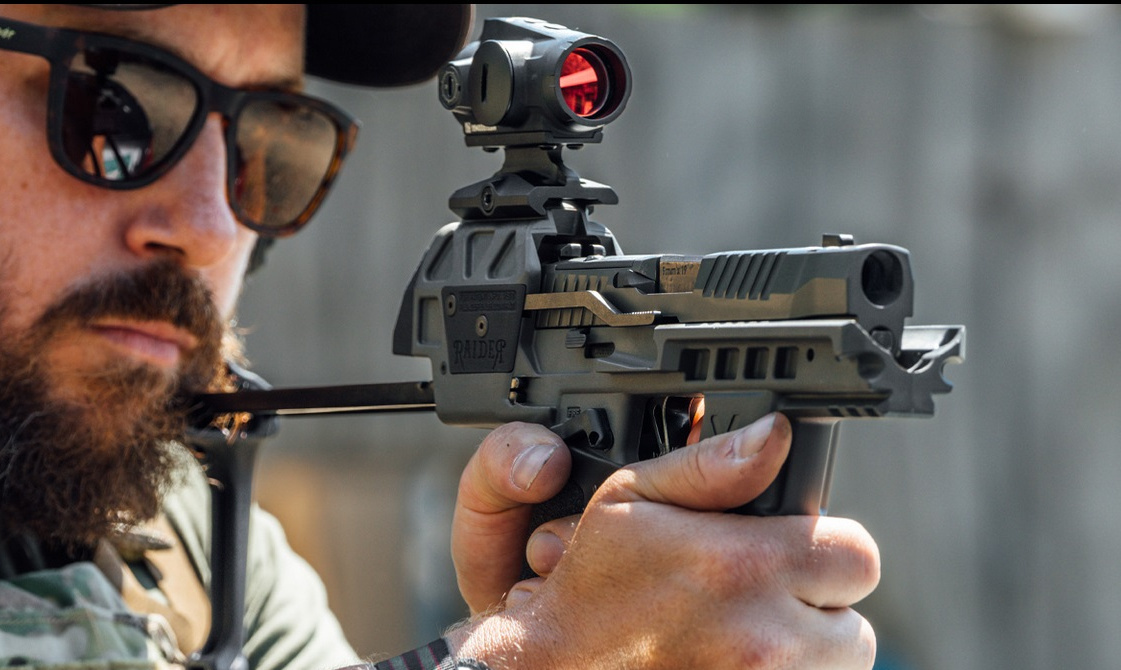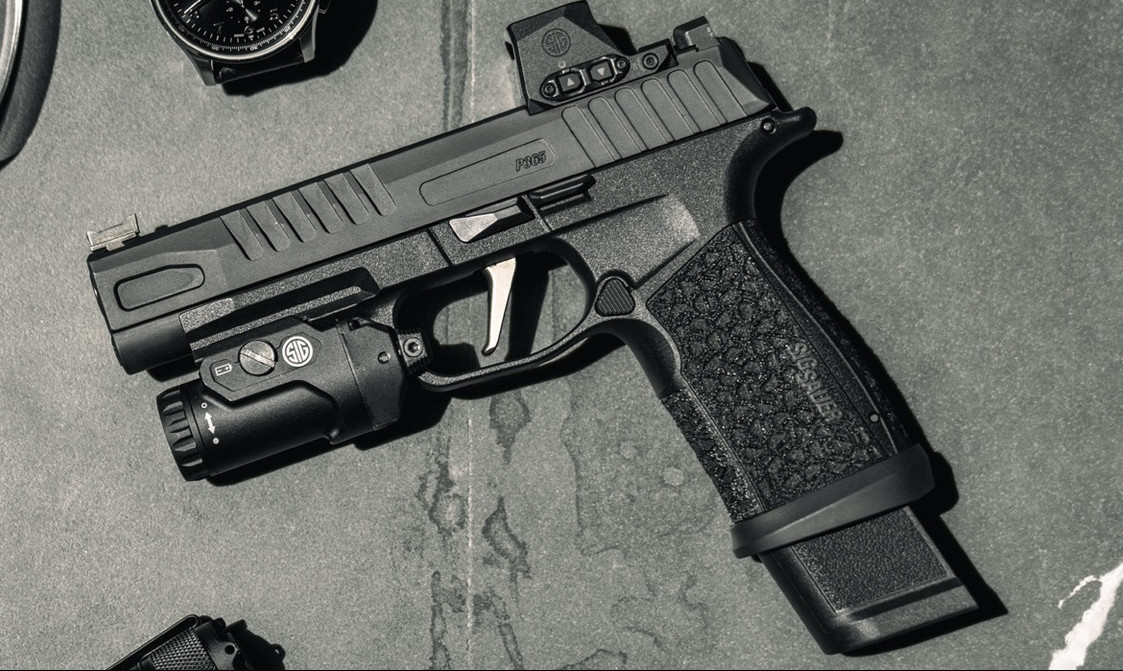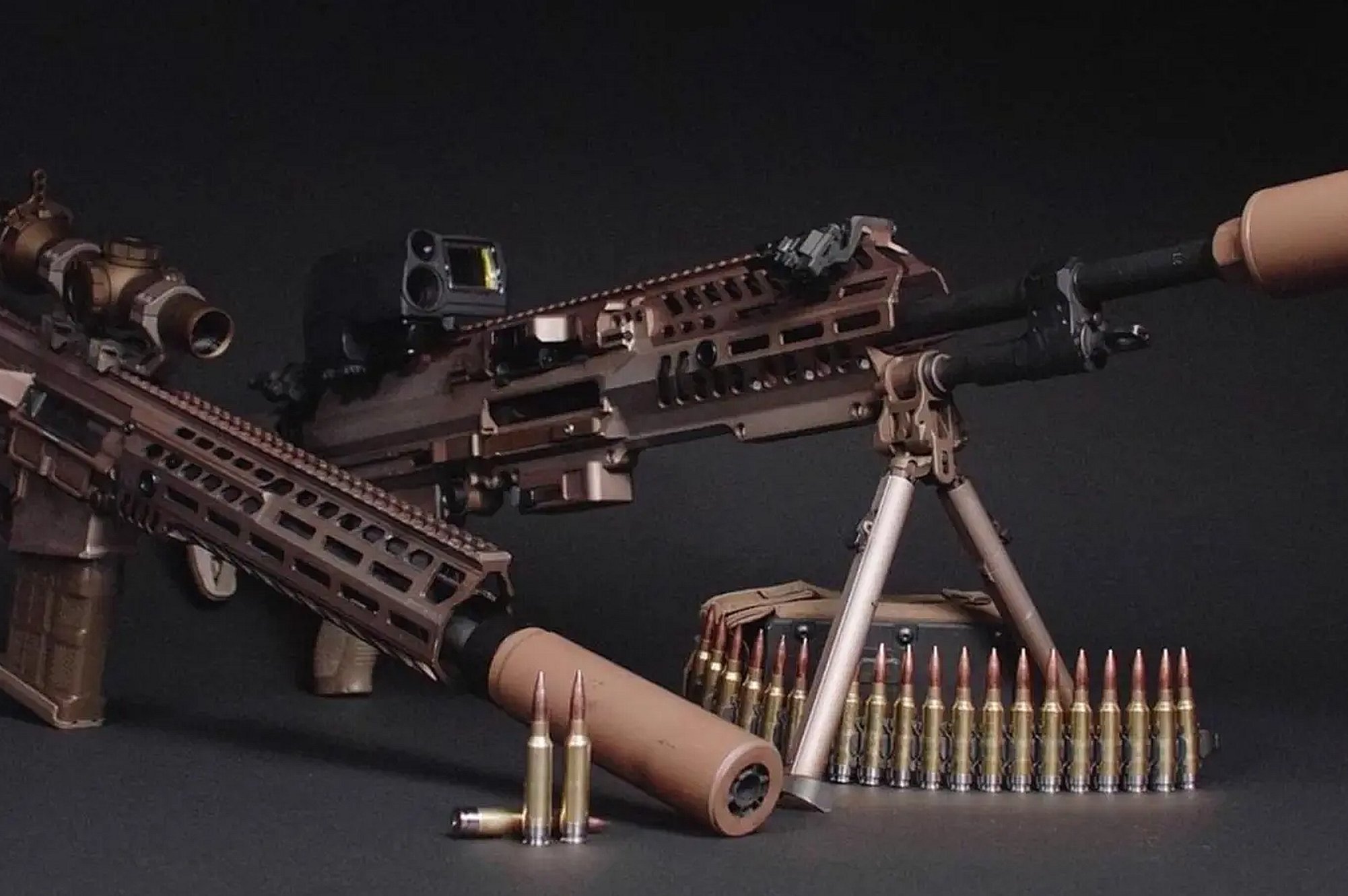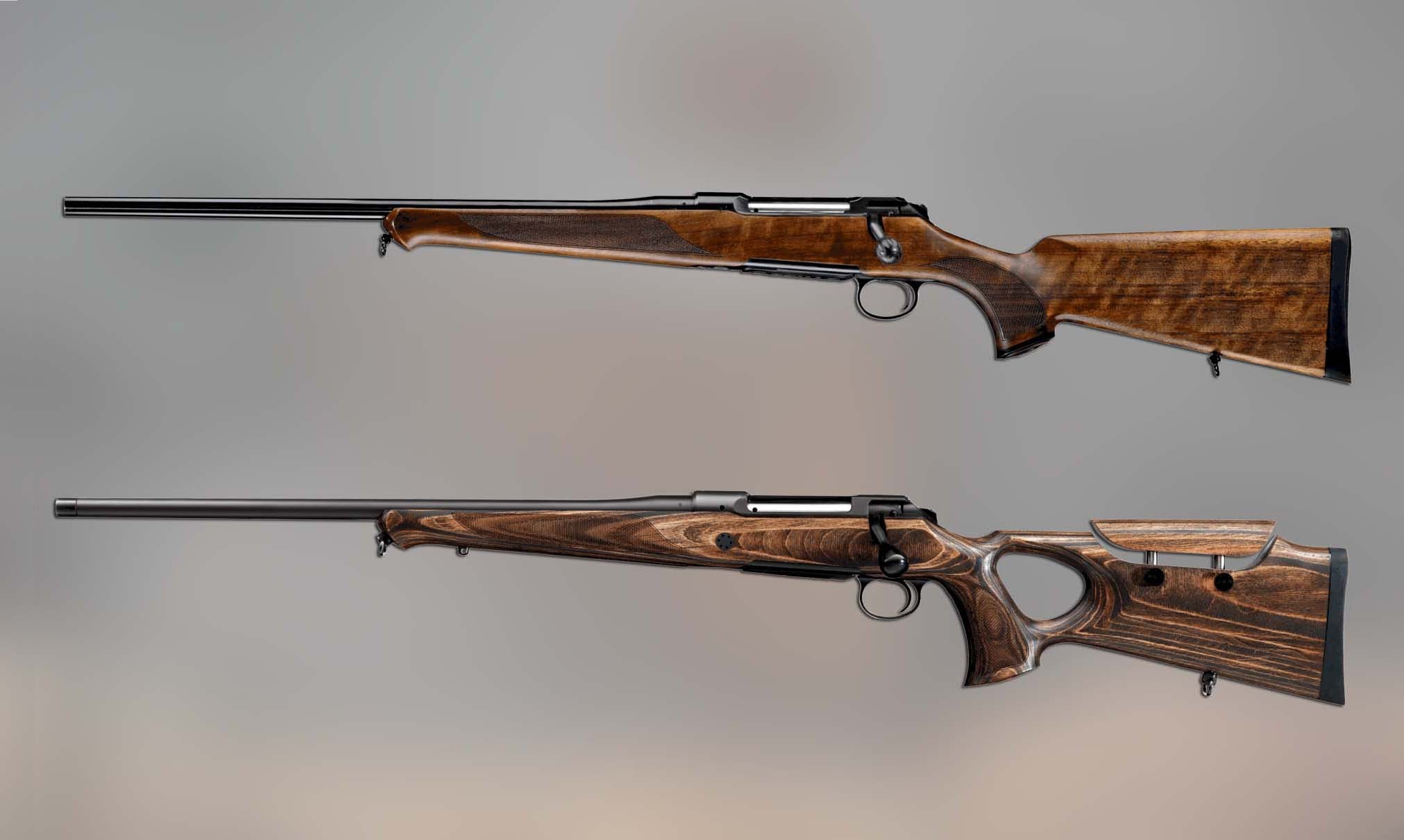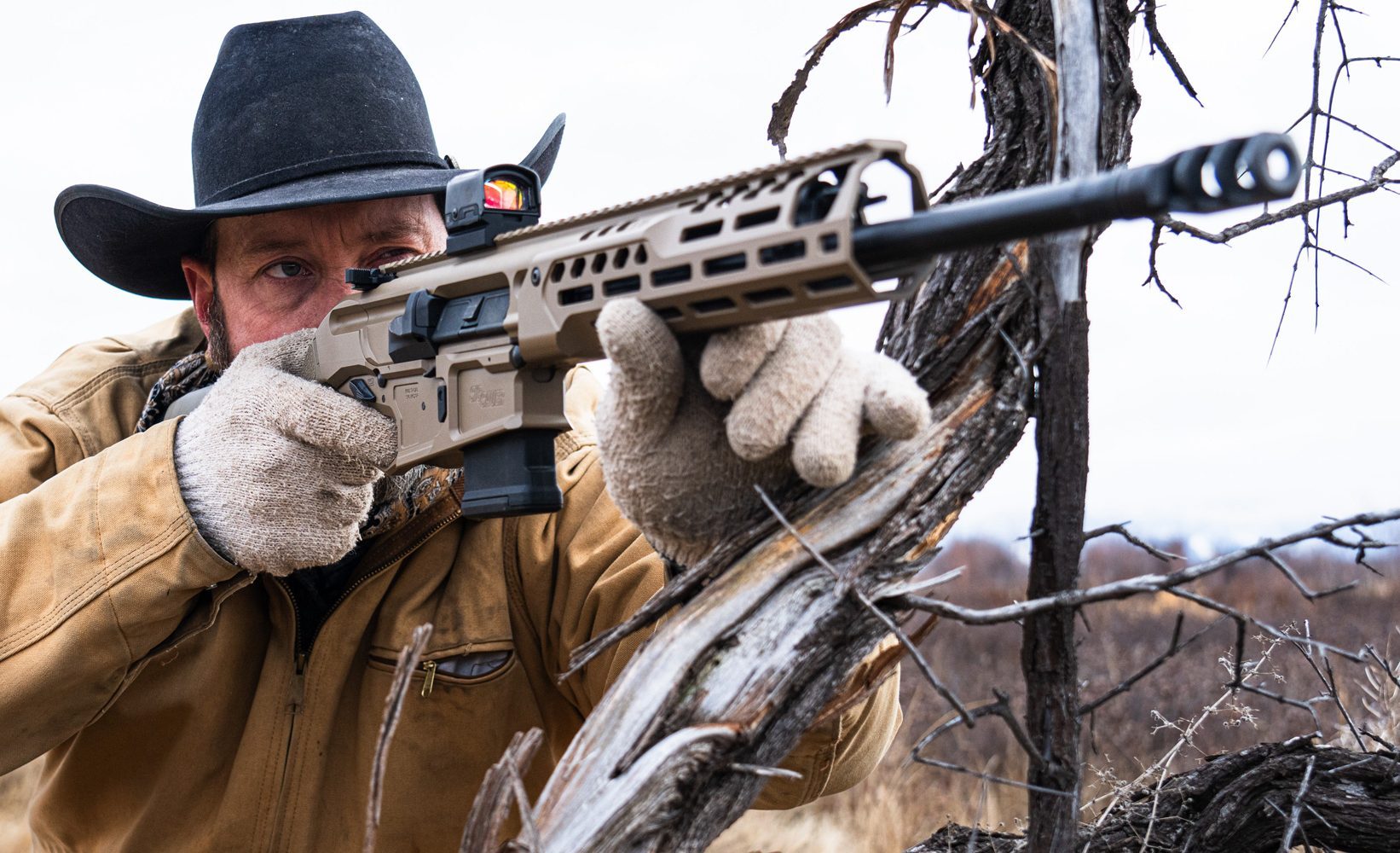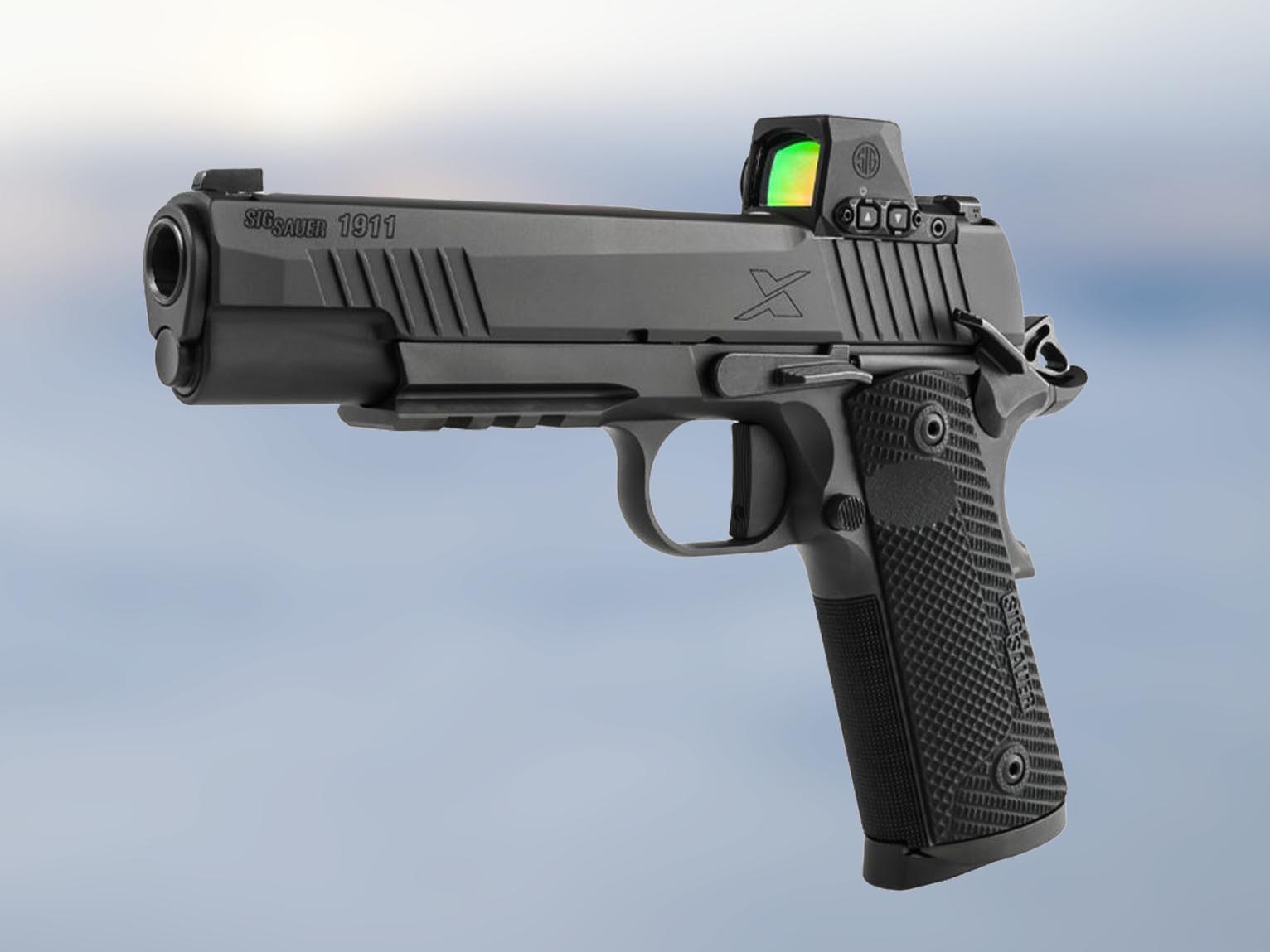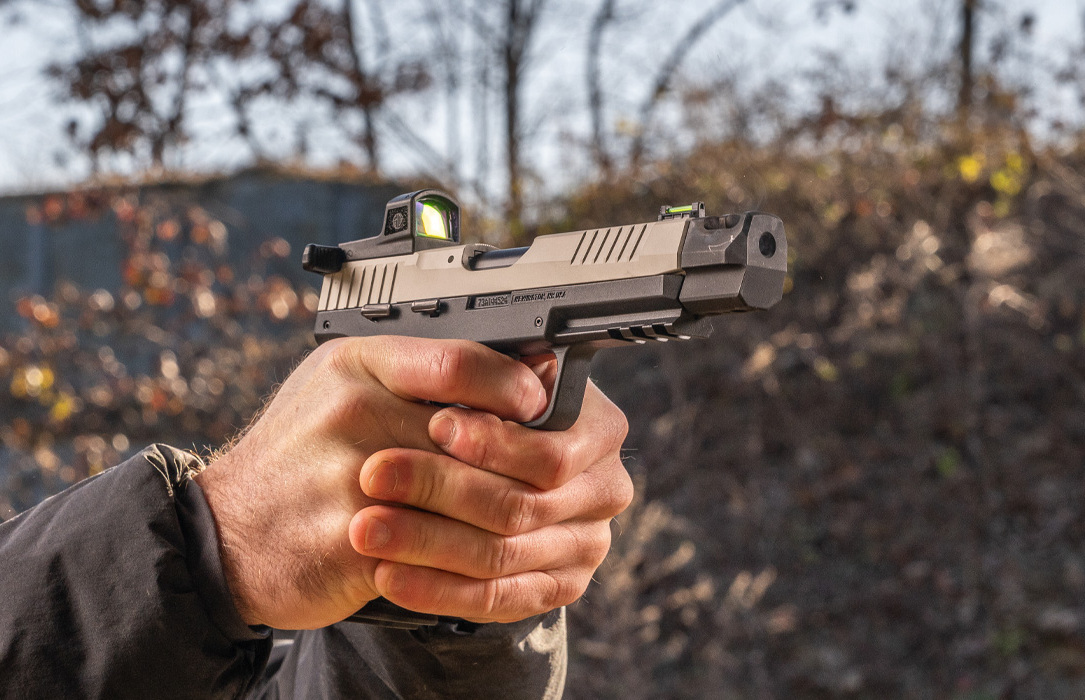Technical innovations in the field of large-caliber sporting or service pistols are quite rare to find. The 1911/2011 dominates the sports sector, while "plastic" now sets the tone in the service pistol sector.
SIG Sauer P320: a modular pistol platform
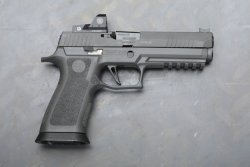
The SIG Sauer P320 has only been on the market since 2014, but it enjoys a fairly high level of diffusion. This is also thanks to its modularity, as the serial numbered trigger assembly can be used in a variety of grip sizes that are freely available for purchase in most countries. Although SIG Sauer's order books should also be well filled in the military/LE sector, they have not forgotten the sport division, as evidenced by the top-notch SIG Sauer IPSC/Action Team with top shooters like Max Michel and Lena Miculek, but also the P320 X-Five. This model shares the sporting equipment with the Legion version presented here:
The sporting features of the P320 X-Five Legion in detail
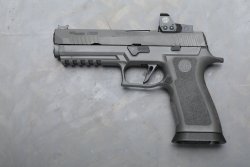
The barrel has been lengthened to 4.9”/126 mm on the full-size version and the slide has been adjusted accordingly. Cutouts on the top reduce the weight of the PVD-coated slide, whose color scheme is called "Tungsten Grey" by SIG Sauer. We find the iron sights to be very effective. The rear sight protrudes slightly to the back of the MRDS cover plate. The micrometer rear sight has been cross-ribbed on the blade, and the X-Five has been fitted with a beautifully narrow 2.3 mm front sight with an fiber optic insert from Dawson Precision. If you want to mount a red dot sight, you can use the in-house Romeo1 Pro, Trijicon RMR or Leupold Delta Point.
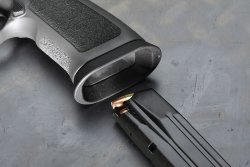
The trigger has been further improved according to the manufacturer. However, we still measured around 67 oz/1900 g here on the flat trigger blade of the Legion. Whether less is not desired due to US product liability is quite conceivable, but more could definitely be gotten out of a pure single-action trigger. The trigger weighs about 21 oz/600 grams and the length of the trigger slack is also relatively long at 2 mm. Nevertheless, we did not find the trigger to be unrefined – it is quite practical. A steel magwell rounds out the sporty overall appearance. In addition to the three magazines with a capacity of 17 cartridges, the gun also comes with a second 12 lb recoil spring. This is supposed to provide a smoother shooting feel compared to the mounted 14 lb spring. Because the one-piece, steel, spring guide rod is not encapsulated, it can be changed in a snap. The slide-frame fit turned out to be quite generous, but that doesn't have to be a disadvantage. Unfortunately, however, the barrel root also had minor side play of about 0.15 millimeters in the slide.
Composite material: the polymer-tungsten grip module of the P320
But now to the actual novelty of the grip, which, as mentioned, consists of a tungsten-infused compound. The tungsten powder is introduced into the polymer before the actual injection molding process. The grayish heavy metal then also provides the coloring. The X-Five Legion then weighs in at around 43 oz/1220 grams. The difference in weight to the pure polymer grip is thus a whopping 8.6 oz/244 grams. The additional weight of around 1.7 oz/50 grams in the back of the grip has to be subtracted from this. Thus, the Legion grip module ultimately weighs 12.13 oz/344 grams, while the polymer version weighs 3.88 oz/110 grams. Since we didn't have a 3D scanner to measure the volume of the grip, we determined a volume of around 114 cm³ in a practical test by gauging.
This gives a density of the material of about 3 g per cubic centimeter, including any measurement errors due to our simple measuring method, which Archimedes already used to check a gold crown. For comparison: pure tungsten would have 19.3 grams per cubic centimeter, steel 7.85 grams per cubic centimeter and aluminum about 2.7 grams per cubic centimeter. Thus, it is slightly above the weight of an aluminum handle. If the grip were made of steel while retaining the same dimensions, it would therefore weigh around 31.4 oz/890 grams and thus around 19.2 oz/546 grams more.
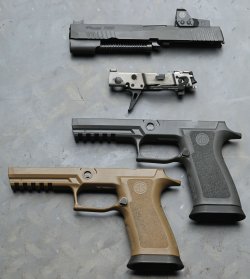
But why didn't they add more tungsten? Probably for durability reasons. With polymer grips, we know that the addition of color additives can already negatively influence the properties of the material. The tungsten sits as a foreign body in the polymer structure. So the more tungsten is incorporated, the higher the density, but the bond of the structure is also weakened.
So this is a compromise that has to be mastered and certainly required a number of test series at SIG Sauer.
The feel has also changed – the grip feels more like metal than plastic, and it also feels colder at cold outside temperatures. SIG Sauer had this process protected under patent number US10866059B2 in December 2020. Thus, it should be difficult for other companies to pick up this technology.
Those who already own a P320 X-Five may be happy to know that the heavy grip module is offered as a spare part. In our opinion, this is a good investment, especially if you want to get involved in more dynamic disciplines.
Under test: the SIG Sauer P320 X-Five Legion on the shooting range
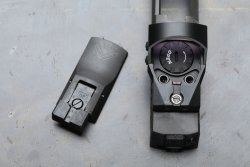
For shooting performance testing, we selected seven loads ranging in weight from 115 to 147 grains. We had a SIG Sauer Electro Optics Romeo 1 Pro micro red dot sight, which immediately went on the slide. We were quite impressed with the clean 3-MOA red dot and the nearly parallax-free adjustment at the 25-yard distance. Along with the large lens, click adjustment and easy battery replacement, this is an interesting red dot sight.
The best result was achieved by the GECO 124-Grain Hexagon ammo with 1.73”/44 mm. Some loads showed that the first cartridge inserted into the chamber by manually cycling the slide stood out a bit from the group. This was also the case with the GECO Hexagon, which, by the way, now comes with new, low-emission primers. The four remaining rounds then stayed together at 0.98”/25 mm. No malfunctions occurred either during the firing performance check or during the numerous, more dynamic drill exercises that followed. The advantageous extra weight of the X-Five Legion was clearly noticeable in terms of recoil and muzzle flip. Even though the P320 is a striker-fired gun, the barrel axis is comparatively high. This is where the genes of the predecessor model P250 with external hammer come through.
SIG Sauer P320 X-Five Legion specs and price
| Model: | SIG Sauer P 320 X-Five Legion |
| Caliber: | 9mm Luger |
| Magazine
Capacity: | 17 rounds |
| Grip
Module: | Tungsten-infused polymer |
| Slide: | Steel |
| Barrel
Length, Rifling: | 126 mm,
6x RH |
| Rear
Sight: | 3.3
mm/fully adjustable, cross-ribbed |
| Front
Sight: | 2.3 mm, with green fiber optic insert |
| Sight Radius: | 182 mm |
| Safety: | Trigger controlled firing pin safety |
| Action,
Trigger Pull Weight: | SA, average 1871 g |
| Lock Time*: | 3 ms |
| Total
Weight (incl. Magazine): | 43.5 oz/1219 grams |
| Dimensions
(LxWxH): | 215x35x150 mm |
| Extras: | Hard
case, 2 spare magazines,12 lb recoil spring |
| Price: | 1499 euro (MSRP in Germany) |
| * Mean of 10 measurements with the trigger scan system | |
SIG Sauer P320 X-Five Legion in 9mm Luger: test wrap-up
The SIG Sauer P320 X-Five Legion is a true exception and innovation in the big world of polymer pistols due to its tungsten-infused heavy grip module. At first glance, it looks like any other ordinary gun of this genre, but when you take it in your hand, the big difference reveals itself. The price of 1499 euros is certainly still okay, but is also in the range in which all-steel pistols can already be offered.
What we liked: | What we found less good: |
Innovative, heavy tungsten-infused polymer grip | Quite high barrel axis |
Good sights | |
Practical trigger | |
Sporty features |
You can find out more about SIG Sauer firearms on the SIG Sauer website.




